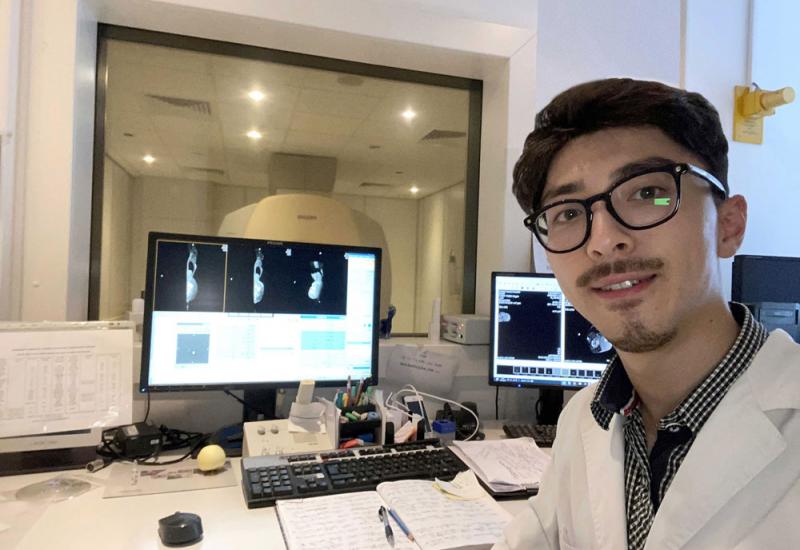According to the World Health Organization, malignant tumors are one of the leading causes of death in the world. Every year, about 140,000 new cases of malignant tumors are registered in our country. The fight against them is one of the most important healthcare issues in Ukraine, the relevance of which is determined by the constant growth of the population's morbidity, difficulties in timely diagnosis, high cost and complexity of treatment, etc.
Today, various approaches are being considered to combat cancer. One of the most promising areas is the development of medical nanotechnology. However, despite the large number of studies aimed at improving methods of imaging and treating malignant tumors, modern medicine lacks interdisciplinary research that would draw on the capabilities of various fields of knowledge - chemistry, physics, materials science, etc. This would help to determine the relationship between different (quantum, molecular, cellular, tissue, organ) levels of the human body, which is essential for the implementation of fundamental achievements in clinical practice.
Therefore, scientists of Kyiv Polytechnic came to the aid of doctors. In particular, Valerii Orel, a postgraduate student of the Department of Translational Medical Bioengineering at the Faculty of Biomedical Engineering, is a radiologist at the Radiation Diagnostics Department of the National Cancer Institute. In his clinical work, he deals with the diagnosis of malignant breast tumors and the assessment of the effect of patient treatment using imaging methods (mammography, ultrasound, magnetic resonance imaging). His supervisors, Professors Oleksandr Yuriiovych Galkin and Valerii Emmanuilovych Orel, are pleased with their student, as the number of his publications on the topic of research reaches two dozen, and the h-index is 5. Recently, Valeriy Orel was awarded a two-year scholarship by the Cabinet of Ministers of Ukraine as an author of relevant scientific and technical developments. Of course, the postgraduate student implements the innovative scientific and practical results she has obtained in her teaching work with students. "In oncology practice," says the young researcher, "there are still a number of unresolved issues related to the effect of anticancer drugs on malignant tumors and surrounding tissues and quantitative computer analysis of medical images. By the way, the European Society of Radiology is implementing artificial intelligence methods for quantitative computer analysis of mammograms and MRI images."
As the title of the article suggests, this is about nanotechnology. Practitioners consider nanotechnology to be an art. The art of creating and operating objects with sizes ranging from particles to hundreds of nanometers. Reputable publications show that nanotechnology is an interdisciplinary field of fundamental and applied science and technology that deals with a combination of theoretical substantiation, practical methods of research, analysis and synthesis, as well as methods of production and application of products with a given atomic structure through the controlled manipulation of individual atoms and molecules. The priority area of application of magnetic fluids based on nanoparticles is medicine and pharmacology.
Indeed, the research work of the young scientist focuses on the use of magnetic nanotechnology based on iron oxide nanocomplexes for controlled targeted delivery of anticancer drugs to the tumor focus and enhancement of their effect under the influence of an external electromagnetic field. "The antitumor effect of magnetic nanotherapy is based on the effects of quantum chemistry and biology, which realizes the possibility of modulating the kinetics of free radical reactions," explains the researcher. "Free radicals act as signaling molecules between the tumor and its microenvironment, and their remote modulation leads to controlled oxidative stress and the initiation of malignant cell death with limited side effects on healthy cells. In addition, magnetic nanocomplexes serve as a platform for the simultaneous diagnosis and treatment of malignant tumors, i.e., the simultaneous initiation of an antitumor effect and its evaluation in medical images."
Scientists emphasize that the introduction of domestic magnetic nanotechnologies into oncology practice requires the interaction of scientists in the fields of materials science, biomedical engineering, medical physics, radiology, and clinical oncology. Thus, today, leading experts from the E.O. Paton Institute of Electric Welding, the Institute of Magnetism, the Lashkarev Institute of Semiconductor Physics of the National Academy of Sciences of Ukraine, the National Cancer Institute of the Ministry of Health of Ukraine, and the Faculty of Biomedical Engineering of Igor Sikorsky Kyiv Polytechnic Institute are jointly solving these problems to accelerate the clinical implementation of magnetic nanotechnology in the diagnosis and treatment of malignant tumors.

